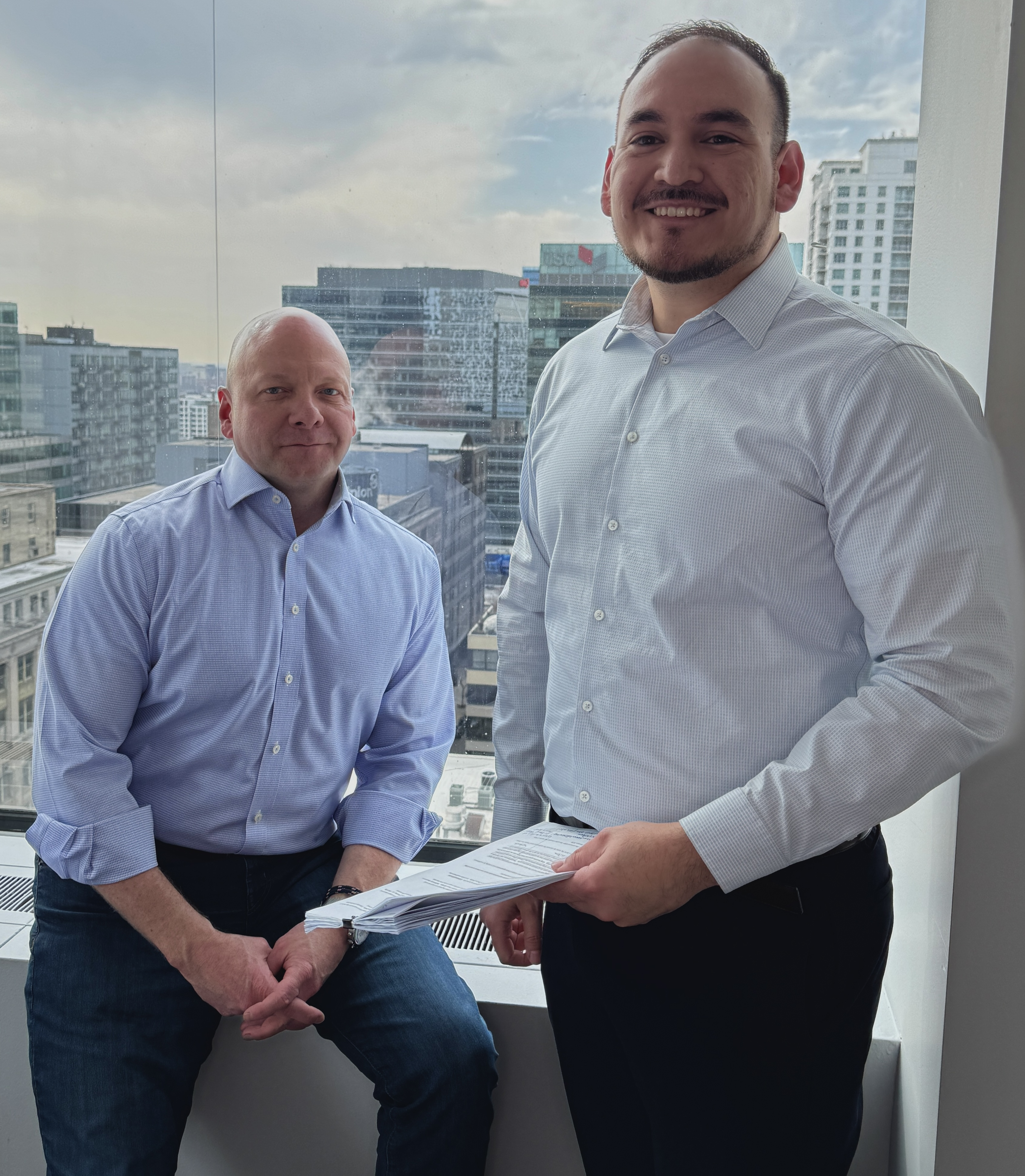Profile in Inclusion
Ed Burke and Edgar Quintero

Ed Burke and Edgar Quintero started their legal careers in the long shadows of unprecedented and transformative events. Burke had barely settled into his desk when planes hit the Twin Towers on 9/11, while Quintero started his practice as the world was taking its first tentative steps back towards normalcy as the COVID-19 pandemic receded.
The 20 years bookended by those seismic experiences saw the world — and the practice of law — change in countless technological and cultural ways. But the GenX Burke and the GenY Quintero will tell you that dueling calamities aren’t the only similarities between their initial experiences as lawyers. For both, the uncertainties that surrounded them were matched by the internal uncertainties they carried as newly minted legal professionals.
“I had no idea what I was doing; a real deer in the headlights feeling,” Burke recalled, a sentiment shared by Quintero.
“There was so much I needed to learn. I didn’t know what I didn’t know,” said Quintero, an associate in Chuhak & Tecson’s Financial Services practice led by Burke.
Both of these attorneys credit the guidance, patience and wisdom of their more senior colleagues for showing them the ropes and giving them the tools and confidence they needed to become the successful lawyers they are today. Quintero says that one of the things he appreciated the most when he joined Chuhak & Tecson was the balance the firm, and Burke, struck between having high expectations for newer attorneys and recognizing that they won’t likely meet them on their own.
“Ed didn’t hesitate to throw me into the deep end of the pool early on, but he was always there to teach me how to swim,” he says. “His door was and is always open. He took the time to help me understand how to best serve clients and showed me how to be more efficient in a way that allows me to achieve my professional goals while still having time for my personal life. I’ve seen that same supportive, inclusive and collegial mentoring dynamic throughout the firm.”
As Burke looks back now, from his perch as the leader of a team with several attorneys, including Quintero, from younger generations, he’s come to understand that the exchange of knowledge and perspectives is a two-way intergenerational street.
“When I started, we were using carbon paper to prepare court orders; there’s a good chance that Edgar has no idea what carbon paper even is,” Burke said semi-jokingly. “Conversely, a lot of the technology and ways of communicating that are so intuitive for folks in his generation and are now so essential to practicing law and serving clients were equally unfamiliar to us more ‘seasoned’ attorneys, at least initially.”
Burke says that working with younger lawyers like Quintero continues to help him not only more efficiently utilize new technologies but also understand how they’ve changed what clients expect from and how they communicate with their attorneys.
“What was considered a timely response 20 years ago would be a dereliction of duty today. Clients fully expect their lawyer to get back to their email, text or call pretty close to instantaneously, and we do,” Burke says. However, he also notes that while younger lawyers may understand the need for timeliness, they sometimes need to get out of their GenY communication comfort zone in order to effectively serve clients.
“Anyone with a teenager knows that they would infinitely prefer to text or email than make a phone call. But that isn’t always the best way to go about things, both practically and in terms of relationship building,” Burke says. “Often, a three-minute conversation can answer a question or resolve an issue that would otherwise take multiple rounds of emails in which the attorney and client speak past each other. New tech may be indispensable, but sometimes old-school interaction is as well.”
Quintero agrees and recognizes how generational differences in communication styles can be complementary rather than conflicting.
“Ed has really taught me the importance of building personal client relationships and how email is inherently more impersonal,” he says. “Just by watching how he interacts with clients and with attorneys of my generation, I’ve come to appreciate the value of picking up the phone or setting up a face-to-face meeting. It has definitely changed my perspective and made me a better lawyer.”
For Burke, the emergence of Millennial attorneys like Quintero into the legal profession serves as a reminder that generational change always represents an opportunity to refresh or alter perceptions, or discover new ways to be a better lawyer.
“Westlaw and computerized legal research were the big new tech advancements when I began my career,” Burke says. “I recall older attorneys being initially intimidated but ultimately learning the value of how those tools could help them do their jobs more efficiently. It’s the same dynamic today, and it will be when Edgar and his peers start working with whatever they call the generations that follow. It’s just an invaluable circle of never-ending learning.”